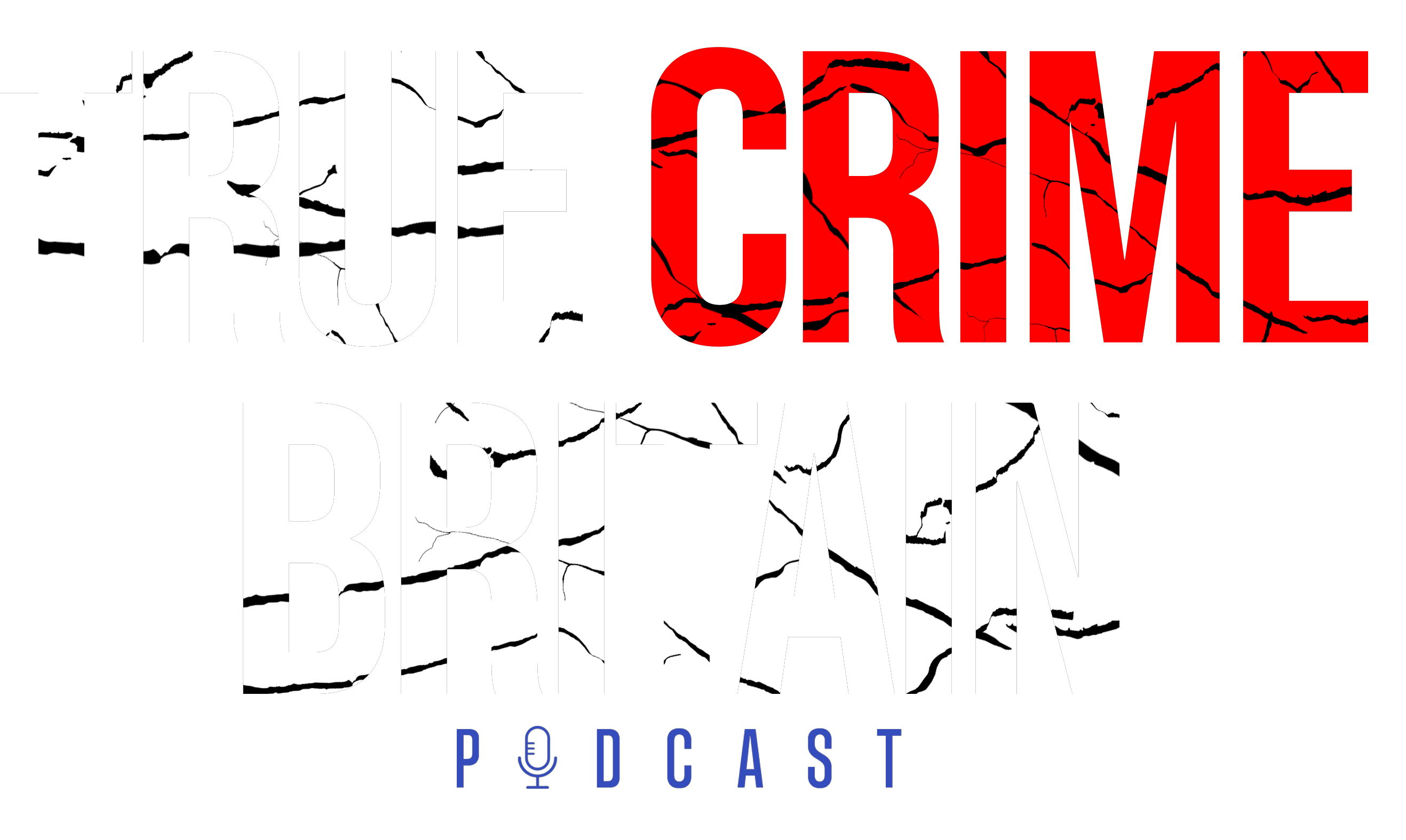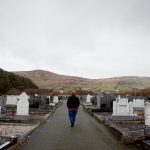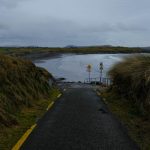
Episode 37 - The Kerry Babies Case
Kerry or “the Kingdom” as it is often referred to by the Irish, is known for its mystical landscape, beautiful sandy beaches, cliffs and rocky headlands. Today’s case begins at one of those scenic places, at about 500 m long White Strand beach near Caherciveen. The beach is in a sheltered location, between the mountains, which makes it a popular spot for swimming and courting. But back in 1984, White Strand beach became a scene of a crime which sparked an investigation that shocked the entire nation.
The Discovery
On Saturday, April 14, at about 8:30 AM, a farmer named Jack Griffin was jogging along the sandy crescent, on his way to check on his cows that were grazing on the nearby grassy field. It was then that Jack noticed something that looked like a doll wedged in the rocks of the beach. Jack didn’t think too much about it at first and continued his morning duties. But when he later returned, Jack couldn’t help but take a closer look at the small, terribly pale figure—what he thought was just a doll was actually a naked body of an infant.
Gardai were alarmed, and the little baby boy with terrible injuries was taken to Killarney for post-mortem. The examination was carried out by pathologist Dr John Harbison, the first State Pathologist of Ireland who presided over post-mortem examinations into thousands of murders and suspicious deaths during his career. The results revealed that the unidentified child was only 2-3 days old. He had been stabbed 28 times in the neck and chest—the blade had pierced the heart four times. The boy’s neck was also broken and he had numerous other small injuries over his body. This was in no way an accident, but an extremely brutal murder of a defenceless child.
As there was practically no evidence whatsoever for the police to work with, Gardai began to search for women in the county who were known to have been pregnant and no longer were. At the time, it wasn’t uncommon for women to give birth at home for various reasons. By the mid-1980s, a significant number of women in Ireland still refused to give birth in large hospitals and instead sought the help of midwives to give birth as naturally as possible in the comfort of their homes. And then there were those who didn’t want anyone to find out about the pregnancy and the baby fearing they would be shamed by the community because of their young age or the fact they were not married. In the 1980s, Catholic Church’s patriarchal weight still came down heavily on almost every aspect of society. Sex education for girls was practically non-existent, condoms required a prescription and only married women were allowed to purchase birth control pills—and only if they managed to find a doctor willing to prescribe them. Some of the women with unwanted pregnancies were sent to church-run homes to forcibly deliver babies that were then given up for adoption. At the time, Irish women were not in control of their own bodies or relationships, as divorce was illegal until 1996. The Kerry baby was discovered during very difficult times. The investigation into the child’s murder further demonstrated how women’s position was seen in society at the time and opened a dark chapter in Ireland’s history.

For more horrifying true crime stories, please click below:
Archives
So to find and question every possible mother candidate of the murdered baby boy, Gardai conducted door-to-door inquiries, demanding the women show their children to prove nothing had happened to them. Eventually, the search spread beyond the town of Caherciveen to neighbouring Waterville, Killorglin, Sneem and Glengarry. Hippies and travelling families without a permanent home in the area were visited by the Gardai—but the inquiries yielded no results. Meanwhile, a gravedigger kept a watch on the murdered baby boy, who was baptised and given the name John, grave but no one visited.
While many rightfully felt that their privacy was horribly violated during the investigation, one woman did benefit from the visit of the guards. She had secretly given birth months earlier and had remained indoors ever since, shamed to move freely with her newborn. After Gardai’s visit, the child was officially registered and the mother agreed to apply for an unmarried mother’s benefit, which was 51 pounds a week. Despite the stigma, the mother now felt comfortable enough to walk the streets of her hometown with her child. Unfortunately, the same could not be said of so many others.
After two weeks of searching for the baby John’s mother without avail, local police requested the assistance of the Dublin-based ‘Murder Squad’. It was then that three phone calls were made by Detective Sergeant Dillon. One was to CURA, the catholic organisation that helps unmarried mothers but they couldn’t help in the Kerry baby investigation. The second call was to the Bon Secours hospital, during which DS Dillon learned nothing useful. But when he contacted St Catherine’s hospital, DS Dillon was given the names of three unmarried women who had been pregnant around the time the body of the baby had been discovered. Two of these women were quickly cleared as possible mothers of ‘John’—but the file of the third woman, 24-year-old Joanne Hayes from Abbeydorney, looked suspicious.
Joanne
According to St Catherine’s hospital records, Joanne had visited the maternity ward on April 14 due to heavy bleeding—the very same day John was found. Although Joanne claimed she had not had a child, a scan made by the gynaecologist John Creedon suggested otherwise, showing signs of the young woman’s uterus being recently emptied.
Still, DS Dillon didn’t really consider Joanne Hayes as a person who could have stabbed an infant 28 times. She seemed just like every other woman who had visited the hospital for a similar reason with a voided womb. But strangely, when DS Dillon spoke with Abbeydorney’s only policeman, Liam Moloney, he learned that Joanne’s cousin claimed Johnna had miscarried in hospital. But according to the records, that wasn’t true.
Gardai learned that Joanne had had an affair with a married man named Jeremiah Locke. The 22-month relationship had resulted in three pregnancies, one miscarriage, one baby girl named Yvonne and another baby whose fate was unknown. Joanne had believed Jeremiah would one day leave his wife and set up a home with her but that never happened. Instead, the affair ended around Christmas 1983 after Joanne found out Jeremiah’s wife, Mary, was also pregnant again. So Joanne started the year 1984 heartbroken with a baby in her belly, whose father she would never see again. Then, on April 14, Joanne wasn’t pregnant again but there also was no baby anywhere. Some assumed Joanne’s child had been given up for adoption, and some thought she had miscarried. But now Gardai believed something far more sinister had happened.
Eventually, Joanne and members of her family were brought in for questioning on May 1, 1984. At first, Joanne denied her pregnancy but as soon as she realised Gardai was talking about the baby that was found at the beach near Cahirciveen, she changed her story. Now, Joanne admitted she had expected a child but claimed to have miscarried in early April. Gardai, however, didn’t believe Joanne and kept pressuring her until she finally confessed to giving birth on her family farm in Abbeydorney—about 50 miles from White Strand Beach. It’s unclear if the baby was stillborn or died soon after his birth, but Joanne nevertheless admitted burying her son in the field. So, there was a way for Joanne to prove she wasn’t the mother of baby John. Gardai just had to take her back to the field and her child’s grave—but the guards refused. Joanne still drew a map of the location and apparently several searches were conducted but Gardai failed to locate the body. But the truth is that the guards most likely never really searched the field properly. Everyone thought Joanne’s baby was already found down in Cahirciveen so why bother?
Gardai continued to use “oppressive methods of extracting statements” on Joanne, something that could be called “systematic maltreatment” of a suspect. They threatened to throw Joanne in a prison cell and her baby daughter Yvonne in an orphanage saying the girl would never see her mother again. Needless to say, Joanne was horrified and finally crumbled under the pressure, admitting she killed the baby on the Beach by ‘putting her hands around the baby’s neck till it stopped crying.’ But she did not mention anything about 28 stab wounds.
Joanne’s confession was followed by statements from her family members. Kathleen Hayes, Joanne’s sister, told Gardai her daughter really strangled the baby and she was the one who provided the knife—but it was Mike Hayes, Joanne’s brother, who stabbed the child. In addition, Ned Hayes, another brother of Joanne, admitted he knew about the murder. Joanne’s mother Mary’s account didn’t exactly match with known facts of the case. Nevertheless, based on the Hayes family’s statements, Gardai put together a theory of what had happened. They believed Joanne gave birth on April 13, she then strangled the child and another member of her family conducted the stabbing before someone drove the 50 miles to White Strand Beach to dispose of the body. But there was one big problem—Joanna’s baby boy’s body was found the very next day exactly where she had said it would be.
Aftermath
After the discovery of the burial ground in the field of the Hayes family farm, it became clear Joanne had not lied. At least not about that part of the story. Nobody still knew whether the child had died of exposure, was killed by Joanne or was stillborn. Autopsy results were inconclusive but also found no signs of strangulation or any stab wounds.
One could think that Gardai would have backed off at this point. But instead, they came up with an absurd theory—they believed Joanne Hayes had given birth to twins. One of the boys was then buried on the farm and another on the beach. Gardai didn’t even care about the fact that blood tests showed the Baby on the Farm had Blood Type O, while the Baby on the Beach had Blood Type A. Both Joanne and Jeremiah had blood type O, meaning they couldn’t be baby John’s parents. But again, Gardai had an explanation: Heteropaternal Superfecundation.
This extremely rare phenomenon occurs when a second ova released during the same menstrual cycle is fertilised by the sperm cells of a different man. In other words, Gardai speculated Joanne had slept with two different men within a short time period, both of these men impregnated her and as a result, she gave birth to two sons—one with Type O and the other A. Rather than admitting they were wrong, Gardai came up with a wildest, most unlikely scenario possible. Fortunately, this theory was so ridiculous it carried little weight in medical and legal circles. Eventually, as there was no evidence linking Joanne Hayes to baby John, all her charges were dropped.
The mishandling of the case led to a government tribunal. While the Hayes family claimed Joanne and her relatives had been verbally, physically and mentally abused during questioning, Gardai denied all the accusations. The tribunal quickly devolved into a trial of Joanne’s womanhood—her character, personal affairs and sex life were all on public display. There were literally maps made about locations where Joanne and her lovers had been intimate and doctors were giving details about the size of the young woman’s birth canal. While Joanne received support from women across the country, the tribunal never brought her justice—while it found Joanne didn’t kill baby John, Gardai was absolved of any wrongdoing.
After the witch hunt finally ended, Joanne Hayes returned to Abbeydorney, but her life was forever impacted. It took Gardai 34 years to finally apologise to her after DNA tests conclusively ruled that she could have not been Baby John’s mother.
Meanwhile, the real parents and the killer of Baby John are yet to be found. A murder inquiry is currently ongoing and the child’s body was exhumed by Gardaí at Holy Cross Cemetery in Caherciveen on September 14, 2021, as part of the investigation. Only time will tell if Baby John’s real identity will be uncovered and his killer or killers brought to justice—or if Gardai messed up the possibility to get answers by focusing on the senseless witch hunt.
—–
Anyone with information in relation to this ongoing investigation is asked to contact Killarney Garda Station at 064 6631222, the Garda Confidential Line 1800 666 111 or any garda station.
Episode Credits:
Host – Rhiannon Doe
Voiceover – Kwesi
Website layout & design – Fran Howard
Sources:
The Kerry Babies Case: A Woman to Blame
A baby’s murder opened a dark chapter in Ireland that still hasn’t been closed
Maguire, Moira J.: The changing face of Catholic Ireland: Conservatism and liberalism in the
Ann Lovett and Kerry Babies scandals
Motherhood, Murder, and the Media: Joanne Hayes and the Kerry Babies Case
White Strand (Cahersiveen) Beach
Motherhood and murder: The mystery of the Kerry babies scandal and why it’s back in the news
Murder inquiry opens into death of ‘Baby John’ in Kerry in 1984
Give me a crash course in . . . the Kerry babies case development
Kerry Babies: An unsolved murder 34 years after Ireland put ‘womanhood on trial’
Gardaí apologise to woman at centre of Kerry babies case
Kerry Babies: Tribunal report was controversial, divisive, and raised more questions than answers
In 1984 a new born infant was found stabbed to death on the White Strand Beach in Ireland.










